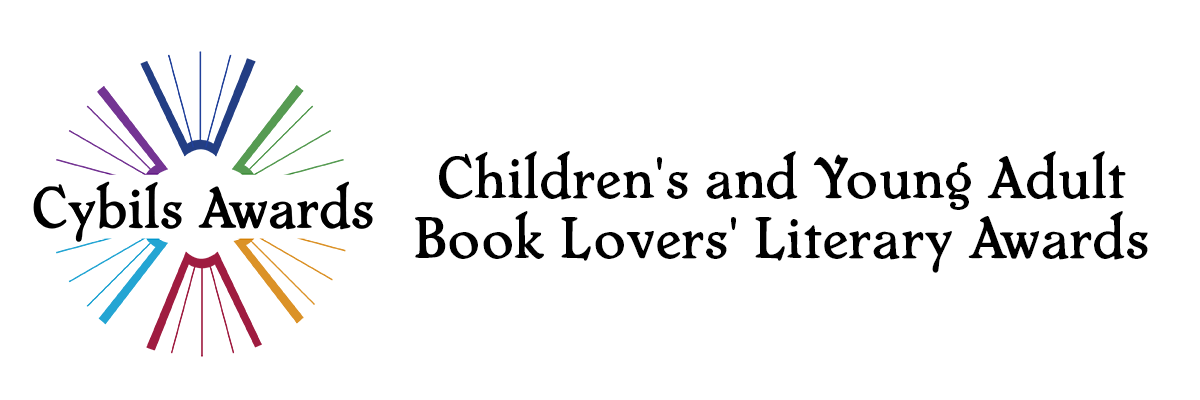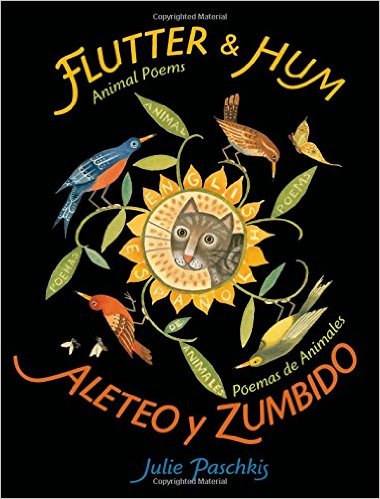First off, congrats! We adored Flutter and Hum. Can you tell us a bit about how you came up with the idea for the book?
I started to learn Spanish when I was illustrating Pablo Neruda: Poet of the People which was written by Monica Brown. I illustrated that book with words and pictures and I fell in love with Spanish. There was something about not knowing the language that made me especially able to appreciate the words as sounds. I could see the words from the outside and the inside – my mind didn’t immediately jump to the meaning.
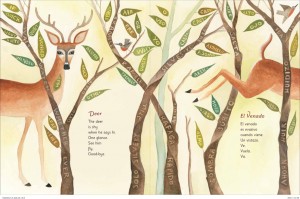 The first poem that I wrote was El Venado. I heard the connection between the words the words ve, va and venado and the rest of the poem grew from there.
The first poem that I wrote was El Venado. I heard the connection between the words the words ve, va and venado and the rest of the poem grew from there.
I wrote the poems in Spanish first and then in English because my English is more limber. Once I had written a poem I would go back and forth to make sure that the poem worked in both languages.
When I was done the Spanish versions were proofread by native speakers to make sure I hadn’t said something horribly wrong or obscene. But the poems are mine and it would probably be clear to a native speaker that they have some oddness to them.
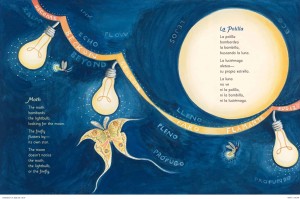 How did you choose which animals to include in the book Did the sounds and shapes of the words available in both or either language affect your animal choices?
How did you choose which animals to include in the book Did the sounds and shapes of the words available in both or either language affect your animal choices?
First I chose an animal, then I explored all of the words that could be associated with that animal. The words and the animals were intertwined. For example I learned the words polilla (moth) and bombilla (light bulb) on the same day. The poems have meanings beyond the sounds of the words, but those sounds were often springboards for my thoughts.
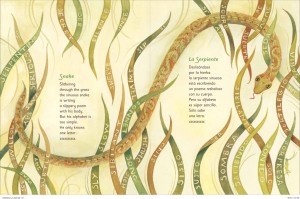 What came first? The poem or the picture of an animal in your mind?
What came first? The poem or the picture of an animal in your mind?
The poems came before the pictures. The words that are woven into the illustrations came after the poems, although I worked from lists of words that I made while working on the poems. Those words are part of the art, but they are also echoes and amplifications of the poems. My hope was that the “extra” words would make the poems more open ended and allow you (the reader) to make your own connections between sound and meaning. I hope that the words and the pictures all work together so much that in the end they can’t be pulled apart.
For example, the Snake/ La Serpiente poem is illustrated with snaky words in snaky grass including sway, swivel and sly on the English side and saliendo (leaving), sombra (shadow) and seda (silk) on the Spanish side. All of those s words and shapes suggest the serpentine and add sensations and shadows to the original concept.
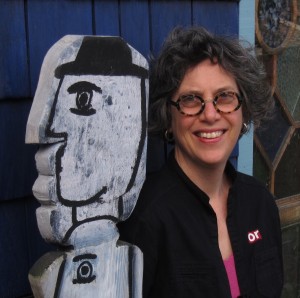 Have you continued to immerse yourself in Spanish, and to write in that language?
Have you continued to immerse yourself in Spanish, and to write in that language?
Yes, I continue to work on learning Spanish – talking, reading and writing. I skype once a week with my teacher in Mexico. I read Spanish books and news, and watch some TV in Spanish. My reading and writing are better than my talking and comprehension. I still love the sounds of the words and I also love the grammar and structure of the language. To become truly fluent I would need to go live in a Spanish speaking country and I don’t have plans to do that right now.
My hope is that Flutter and Hum/ Aleteo y Zumbido will inspire kids (and adults) to explore language,to delve into language and to play with language: English and Spanish, or any other language. You have to risk being foolish and making mistakes to learn a new language, and I think that is a healthy thing to do.
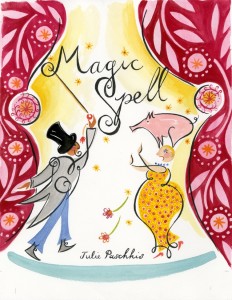 If you don’t mind telling us, what are you working on next?
If you don’t mind telling us, what are you working on next?
I have written the story and completed the art for a book called Magic Spell which will be coming out next year from Simon & Schuster. It also plays with language but it is all in English. It is about a magician and his assistant. They are both great at casting spells. For example he (Aziz) can turn a hose into a rose, or a wig into a pig. And she (Zaza) can turn a coat to a goat, to a boat, to a boot, to a book, to a rook. The story is about the balance of power between the two characters.
Thank you so much for your time!
Thank you so much for the Cybil award. I am truly grateful that you honored Flutter and Hum/ Aleteo y Zumbido. I have been working on children’s books for many years. But I have thought of myself as an artist first and a writer second. It means a lot to me to have the writing as well as the art recognized.
